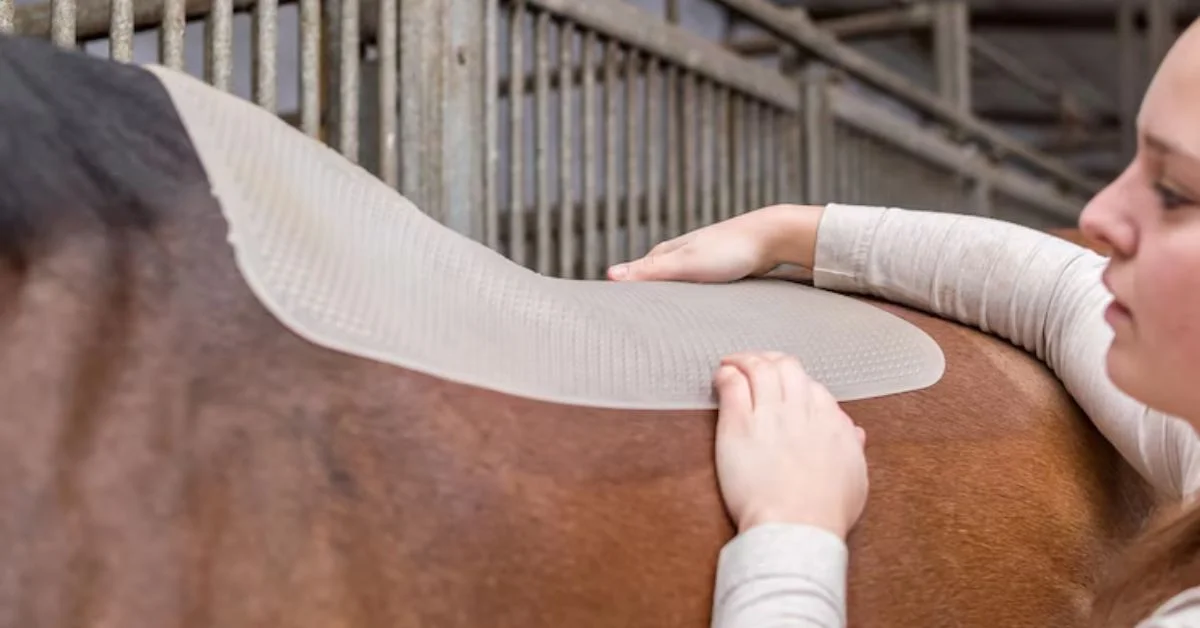When someone searches for “stables tape,” they’re typically looking for one of two things: a product used in equine bandaging and support—or a more specialized application in the day-to-day operations of horse care. And whether you’re a seasoned equestrian, a stable manager, a competitive rider, or a curious newcomer, understanding what stables tape is, how it works, and why it’s important can make a measurable difference in your horse’s well-being and performance.
This article provides a comprehensive, updated, and practical overview of stables tape—from its construction and use cases to best practices, safety considerations, and future developments in veterinary and stable technology.
The Searcher’s Intent: What Is “Stables Tape”?
Within the first few seconds of a search, users want clarity. So here’s your answer:
Stables tape refers to a specific type of adhesive or cohesive bandaging tape used in equestrian settings to support horse limbs, secure wraps, prevent injury, and manage recovery. It’s a staple (no pun intended) in modern horse care kits, used in both veterinary medicine and competitive riding scenarios.
It’s not just about bandaging; it’s about precise support, mobility control, and protection in an environment where horses are constantly in motion.
What Exactly Is Stables Tape?
Stables tape is typically a high-strength, flexible tape designed for equine use. It comes in rolls, much like medical athletic tape or vet wrap, but is engineered for horses’ unique anatomy, muscle pressure, and environmental exposure.
Key Characteristics:
- Stretchable but firm: Offers controlled compression without restricting blood flow
- Water-resistant or waterproof: Suitable for outdoor use and sweat exposure
- Tearable by hand: No scissors required
- Safe adhesive: Designed to stick without pulling hair or irritating skin
- Durable yet breathable: Supports healing and performance without overheating the limb
Depending on the brand and type, stables tape may be adhesive (sticks to the skin or hair) or cohesive (sticks only to itself), with each offering specific advantages in treatment or training scenarios.
Core Applications in the Stable
Let’s break down the everyday uses of stables tape. This is where it truly earns its place as a stable essential.
1. Securing Bandages and Wound Dressings
The most common use of stables tape is to hold bandages in place over wounds, especially on limbs, where standard wraps may slide or loosen due to movement.
- Pro tip: Use a non-stick pad on the wound, then wrap with soft gauze, and secure the outer layer with stables tape.
2. Tendon and Ligament Support
In cases of mild sprains or to reduce strain during transportation or turnout, stables tape can act like an equine version of kinesiology tape—supporting without immobilizing.
- Vet oversight recommended for therapeutic applications.
3. Hoof Protection and Temporary Fixes
When a horse loses a shoe or has a cracked hoof, stables tape can temporarily seal and protect the area until a farrier or vet can intervene.
- Combine with hoof pads or diapers for extra protection.
4. Training and Performance Prep
Some competitive riders use stables tape before shows or races to wrap sensitive areas or stabilize known problem zones. It helps prevent rubs from boots, manage sweating, and reduce friction under tack.
5. Shipping Wraps and Stall Rest
During long-distance transport or periods of stall rest, stables tape helps secure leg wraps, reducing the risk of wrap slipping or pressure sores.
The Material Science Behind Stables Tape
Understanding the technology and construction of the tape helps users select the right product for the right situation.
Components Often Include:
- Elastic cotton or synthetic blend for breathability
- Natural rubber or latex-based adhesive for sticking power
- Non-woven fabrics for flexibility
- Polyurethane mesh layers for durability and water resistance
Cohesive wraps (like Vetrap) don’t have sticky adhesives but cling to themselves. These are excellent for wrapping over sensitive skin or where hair pulling is a concern.
Adhesive tapes offer stronger fixation—useful for high-motion areas but should be removed carefully to avoid trauma.
Choosing the Right Stables Tape: Factors to Consider
With multiple brands and types available, here’s how to make an informed choice.
1. Purpose of Use
- For wounds: Go with breathable, hypoallergenic, cohesive tape.
- For performance: Choose lightweight, sweat-resistant tape with stretch.
- For stable rest: Thick, padded tape that withstands time.
2. Climate and Conditions
- Hot, humid environments need moisture-wicking tape.
- Wet or muddy turnout? Waterproof options are ideal.
3. Size and Roll Length
Standard rolls are 4 to 6 inches wide and come in various lengths (5–10 yards). Thicker tape may be needed for large breeds or leg coverage.
4. Skin Sensitivity
Horses with sensitive skin or reactions to adhesives benefit from latex-free, cohesive products.
Proper Application Techniques
Preparation:
- Clean the area thoroughly—dirt or hair can reduce adhesion.
- Dry the leg completely if using adhesive tape.
- Apply any inner padding or dressing before wrapping.
Wrapping:
- Start below the target zone and work upward.
- Overlap by 50% on each rotation.
- Avoid overtightening—check for signs of pressure like swelling or coolness.
- Secure the end with an extra loop or tape tab.
Removal:
Use a blunt-tipped bandage scissor to avoid skin damage. Always peel slowly, especially when removing adhesive tape from hair-covered areas.
Common Mistakes to Avoid
- Wrapping too tight – Can cut off circulation and cause lameness.
- Skipping padding under the tape – Especially over bony areas.
- Using adhesive tape on wet skin – Leads to poor adhesion and potential irritation.
- Reusing old tape – Always use fresh tape for each application.
- Not checking wraps regularly – A slipped or bunched wrap can be more harmful than none.
Storage and Shelf Life
- Store in cool, dry locations.
- Keep rolls in sealed plastic to avoid dust and moisture.
- Avoid prolonged exposure to sunlight which can degrade adhesive.
- Most unopened rolls last up to two years if stored properly.
Advances and Innovations in Stables Tape (2025 Outlook)
Smart Tape and Embedded Sensors
New prototypes of “smart stables tape” include thin-film sensors that can measure:
- Skin temperature (to detect inflammation)
- Limb movement (to track restlessness or injury recovery)
- Moisture levels (to detect sweating or wet conditions)
Biodegradable Materials
Environmentally conscious manufacturers are now releasing plant-based, biodegradable tapes that perform on par with synthetics but break down naturally post-use.
Color-Coded Therapeutic Wraps
Color indicators now help stable staff distinguish between types: blue for cold wraps, red for therapeutic wraps, green for general use—streamlining communication in busy barns.
Real-World Use Cases and Stories
- A dressage rider uses breathable stables tape under saddle pads to reduce rubbing on long rides.
- A rural rescue center relies on cohesive stables tape to dress hoof injuries when farriers are unavailable.
- Racehorse trainers incorporate waterproof tape during warmups to maintain leg wrap security before entering muddy tracks.
These examples show the tape’s versatility beyond just injury treatment.
Conclusion: Why Stables Tape Is Indispensable
In an environment where horses are both powerful and vulnerable, stables tape serves as a frontline defense—protecting, supporting, and enhancing equine care across disciplines. It’s a modern staple that adapts to traditional horse management techniques, making it just as useful in a high-tech vet hospital as it is in a field barn.
As equestrian care evolves—with smarter diagnostics and deeper insights into animal welfare—stables tape remains an affordable, practical, and multifunctional tool. From first aid to performance optimization, it’s more than tape. It’s trust, rolled up in a toolkit.
FAQs
1. What is stables tape used for?
Stables tape is used in equine care to secure bandages, support tendons, protect wounds, and assist during training or transport.
2. Is stables tape safe for daily use?
Yes, when applied correctly and removed gently. Always monitor the area for signs of pressure or irritation.
3. What’s the difference between adhesive and cohesive stables tape?
Adhesive tape sticks to skin or hair, while cohesive tape sticks only to itself—ideal for sensitive areas.
4. Can I use human athletic tape on horses?
Not recommended. Human tape lacks the flexibility and durability needed for equine movement and outdoor exposure.
5. Where can I buy quality stables tape?
Available at tack shops, veterinary supply stores, and online equine retailers. Look for equine-specific brands for best results.
For more information, click here.









